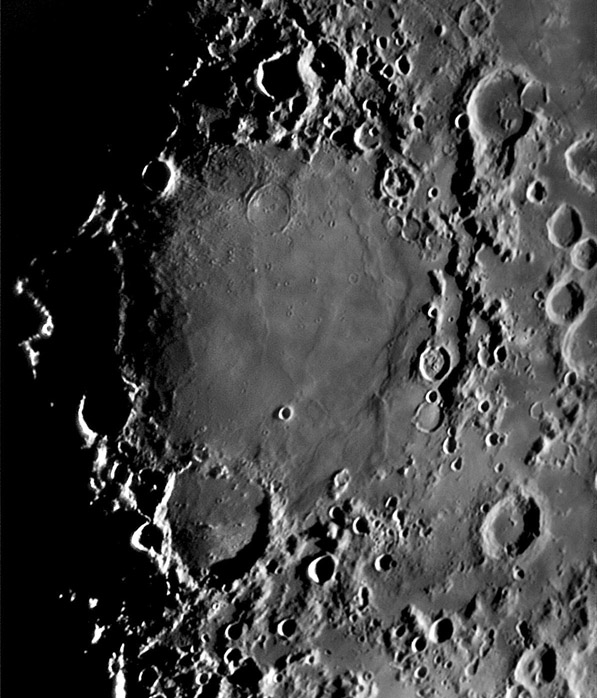Difference between revisions of "January 24, 2013"
| Line 2: | Line 2: | ||
=Nectarian Ridges= | =Nectarian Ridges= | ||
| − | + | <!-- ws:start:WikiTextHeadingRule:0:<h1> --> | |
| − | |||
<table class="wiki_table"> | <table class="wiki_table"> | ||
| − | + | <tr> | |
| − | + | <td><!-- ws:start:WikiTextLocalImageRule:14:<img src="/file/view/LPOD-Jan24-13.jpg/400942604/LPOD-Jan24-13.jpg" alt="" title="" /> -->[[File:LPOD-Jan24-13.jpg|LPOD-Jan24-13.jpg]]<!-- ws:end:WikiTextLocalImageRule:14 --><br /> | |
</td> | </td> | ||
| − | + | <td><em>image by [mailto:howardeskildsen@msn.com Howard Eskildsen], Ocala, Florida. </em><br /> | |
<br /> | <br /> | ||
I love images that show things I've previously overlooked, and Howard's recent image joins that select group. Nectaris is known as a dry basin, that is, it has a relatively small amount of mare lavas on its floor. Because of that it has essentially no volcanic features such as sinuous rilles and domes. But it does have some mare ridges that are thought to form by compression - ridges are low angle faults. Howard's image reveals two families of ridges on the east side of Mare Nectaris, and one - seen as a long illuminated curved ridge - on the west. On the east the near shore bench bends around to the south, finally touching the rim of Fracastorius. Interestingly, the fracture boundary between the higher old floor of southern Fracastorius and the lower mare to the north is the continuation of the ridge boundary. One other comment about the east mare ridges. There are two types of ridges - the gentle step down from the bench, and a broader more typical mare ridge that seems to be over-ridden by the bench edge. <br /> | I love images that show things I've previously overlooked, and Howard's recent image joins that select group. Nectaris is known as a dry basin, that is, it has a relatively small amount of mare lavas on its floor. Because of that it has essentially no volcanic features such as sinuous rilles and domes. But it does have some mare ridges that are thought to form by compression - ridges are low angle faults. Howard's image reveals two families of ridges on the east side of Mare Nectaris, and one - seen as a long illuminated curved ridge - on the west. On the east the near shore bench bends around to the south, finally touching the rim of Fracastorius. Interestingly, the fracture boundary between the higher old floor of southern Fracastorius and the lower mare to the north is the continuation of the ridge boundary. One other comment about the east mare ridges. There are two types of ridges - the gentle step down from the bench, and a broader more typical mare ridge that seems to be over-ridden by the bench edge. <br /> | ||
| Line 21: | Line 20: | ||
<em>[http://lpod.wikispaces.com/21st+Century+Atlas+of+the+Moon 21st Century Atlas]</em> chart B4.<br /> | <em>[http://lpod.wikispaces.com/21st+Century+Atlas+of+the+Moon 21st Century Atlas]</em> chart B4.<br /> | ||
</td> | </td> | ||
| − | + | </tr> | |
</table> | </table> | ||
| − | |||
<br /> | <br /> | ||
<hr /> | <hr /> | ||
| − | |||
| − | |||
| − | |||
| − | |||
| − | |||
Revision as of 23:42, 2 January 2015
Nectarian Ridges
 |
image by Howard Eskildsen, Ocala, Florida.
|



